Comprehensive comparison of the third-generation sequencing tools for bacterial 6mA profiling
- PMID: 40295502
- PMCID: PMC12037826
- DOI: 10.1038/s41467-025-59187-2
Comprehensive comparison of the third-generation sequencing tools for bacterial 6mA profiling
Abstract
DNA N6-methyladenine (6mA) serves as an intrinsic and principal epigenetic marker in prokaryotes, impacting various biological processes. To date, limited advanced sequencing technologies and analyzing tools are available for bacterial DNA 6mA. Here, we evaluate eight tools designed for the 6mA identification or de novo methylation detection. This assessment includes Nanopore (R9 and R10), Single-Molecule Real-Time (SMRT) Sequencing, and cross-reference with 6mA-IP-seq and DR-6mA-seq. Our multi-dimensional evaluation report encompasses motif discovery, site-level accuracy, single-molecule accuracy, and outlier detection across six bacteria strains. While most tools correctly identify motifs, their performance varies at single-base resolution, with SMRT and Dorado consistently delivering strong performance. Our study indicates that existing tools cannot accurately detect low-abundance methylation sites. Additionally, we introduce an optimized method for advancing 6mA prediction, which substantially improves the detection performance of Dorado. Overall, our study provides a robust and detailed examination of computational tools for bacterial 6mA profiling, highlighting insights for further tool enhancement and epigenetic research.
© 2025. The Author(s).
Conflict of interest statement
Competing interests: The authors declare no competing interests.
Figures

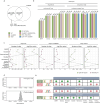
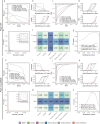
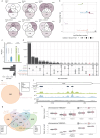
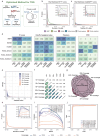
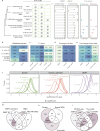
Similar articles
-
SMAC: identifying DNA N6-methyladenine (6mA) at the single-molecule level using SMRT CCS data.Brief Bioinform. 2025 Mar 4;26(2):bbaf153. doi: 10.1093/bib/bbaf153. Brief Bioinform. 2025. PMID: 40205850 Free PMC article.
-
The epigenetic roles of DNA N6-Methyladenine (6mA) modification in eukaryotes.Cancer Lett. 2020 Dec 1;494:40-46. doi: 10.1016/j.canlet.2020.08.025. Epub 2020 Aug 23. Cancer Lett. 2020. PMID: 32846189 Review.
-
Decoding bacterial methylomes in four public health-relevant microbial species: nanopore sequencing enables reproducible analysis of DNA modifications.BMC Genomics. 2025 Apr 23;26(1):394. doi: 10.1186/s12864-025-11592-z. BMC Genomics. 2025. PMID: 40269718 Free PMC article.
-
Characterization of eukaryotic DNA N(6)-methyladenine by a highly sensitive restriction enzyme-assisted sequencing.Nat Commun. 2016 Apr 15;7:11301. doi: 10.1038/ncomms11301. Nat Commun. 2016. PMID: 27079427 Free PMC article.
-
Recent Advances in the Genomic Profiling of Bacterial Epigenetic Modifications.Biotechnol J. 2019 Jan;14(1):e1800001. doi: 10.1002/biot.201800001. Epub 2018 Jun 19. Biotechnol J. 2019. PMID: 29878585 Review.
Cited by
-
Why Are Long-Read Sequencing Methods Revolutionizing Microbiome Analysis?Microorganisms. 2025 Aug 9;13(8):1861. doi: 10.3390/microorganisms13081861. Microorganisms. 2025. PMID: 40871366 Free PMC article. Review.
References
-
- Johnson, T. B. & Coghill, R. D. Researches on pyrimidines. C111. The discovery of 5-methyl-cytosine in tuberculinic acid, the nucleic acid of the tubercle bacillus. J. Am. Chem. Soc.47, 2838–2844 (1925).
-
- Waddington C. H. The epigenotype. Endeavour1, 18–20 (1942).
-
- Knelman, F., Dombrowski, N., Newitt, D. M. & Woodcock, A. H. Occurrence of a new base in the deoxyribonucleic acid of a strain of Bacterium coli. Nature175, 336–337 (1955). - PubMed
-
- Mattei, A. L., Bailly, N. & Meissner, A. DNA methylation: a historical perspective. Trends Genet.38, 676–707 (2022). - PubMed
Publication types
MeSH terms
Substances
LinkOut - more resources
Full Text Sources

